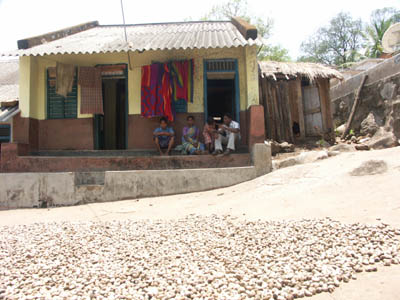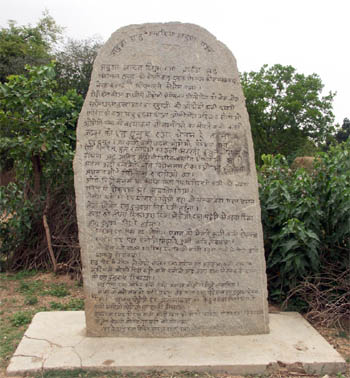Dec 28, 2025
Dec 28, 2025
by Nitya Jacob
This system worked fine when the tribals - the Hos and the Santhals - were hunter-gatherers practicing shifting cultivation. But in the 19th century, the British settled them on land to extract revenue. This meant they had to clear land permanently for farming, houses and plantation; it meant they had to borrow money from moneylenders. Non-tribals also moved in and disrupted the 'munda-manki' system. The region was rich in forests and wildlife, but after the land settlement, the mundas and mankis became agents of moneylenders, prospectors and timber merchants. As the governance system weakened rapidly, the forests began to disappear. Along with that went the wildlife, streams, rivers and ponds. In the space of a few decades, most of the forest cover in this region was reduced to a fraction of its former self. The quality of local governance is directly proportional to the quality of local natural resources. Where village or town-level governance structures are weak or do not exist, the natural resource base is also weak. If there is a good panchayati system or municipality, water and forests are usually available in adequate measure to meet the needs of local people.
The quality of local governance is directly proportional to the quality of local natural resources. Where village or town-level governance structures are weak or do not exist, the natural resource base is also weak. If there is a good panchayati system or municipality, water and forests are usually available in adequate measure to meet the needs of local people.
Take the example of the tribal governance system in Jharkhand's Singhbhum district. It is a traditional village setup where the hereditary head of the village, called the Munda, rules with the help of two others and the consent of the village assembly. A group of around 12 mundas is headed by a manki. Prior to 1947, the mankis reported to the raja (king) of the region.
Now, decades later, the adivasis (tribals) have started getting their act together. The newly constituted gram sabhas (village councils) in most of the villages of Saraikela-Kharsawa district in Jharkhand have resolved to stop tree cutting on village commons. Their jurisdiction does not extend to forests owned by the government - still easy prey for tribals cutting firewood and timber for construction.
(Incidentally, panchayat elections were held regularly (once every three years initially and then once every five years) in the Jharkhand (then called Bihar) from 1950 to 1978. In 2005, the state government issued an order constituting gram sabhas headed by a president, with a treasurer and a panchayat 'sevak' (worker) to conduct meetings.)
In these poor parts, a load of firewood - around a quintal - fetches Rs 150 (US$1=Rs40) in the local market. So a tribal can make that much in around two days - one day to cut the wood and one day to get it to the market and sell it. Construction timber is costlier and a tribal can carry around Rs 300 worth of wood on his cycle to the market. The problem is that quality timber is getting scarce.
Timber is one of the main sources of income, in addition to the collecting and selling of minor forest produce such as lac (resin), kendu leaves (for making beedis), mahua, tamarind and other fruits. Each tribal family specialises in one trade and makes between Rs 100 and Rs 200 a day. How much they make depends directly on the quality of the nearby forests. This is a function of how well the village, and its neighbours, have been governed in the past. A strong village council does not allow tree cutting in and around its area; a weak one cannot stop people from towns and other villages from helping themselves to its resources.
The tribals here have been slow to take advantage of government schemes, such as the National Rural Employment Guarantee Scheme (NREGS), the Indira Awas Yojana (IAY) and the Public Distribution System (PDS). Many of them do not have the job cards and accounts needed to access work under NREGS. Surveys to determine who will get a house under the IAY are seldom completed on time, and are discretionary. The PDS leaks like a sieve, so families that really need subsidised grain cannot avail of it. The root cause is lack of effective local governance.
Across the border, in Orissa's Gajapati district, also dominated by tribals, the story is pretty much the same, save for one major difference. The tribals here may have lost their forests to timber contractors, but they have started reclaiming the barren hills through plantation, under the guidance of non-profit organisations.
 In Gajapati, people have mapped the panchayati raj (village governance) system on to their traditional governance structures. They have elections - as stipulated in the Panchayati Raj Institution (PRI) Act - to a three-tier panchayati system, starting from the ward (approximately one village), through the block panchayat to the zilla parishad (district) level. Earlier, their village headman came from one family, and it was a hereditary post. He ruled with the consent of the village council - one person or family could not ride roughshod over what the majority wanted or he would not last long.
In Gajapati, people have mapped the panchayati raj (village governance) system on to their traditional governance structures. They have elections - as stipulated in the Panchayati Raj Institution (PRI) Act - to a three-tier panchayati system, starting from the ward (approximately one village), through the block panchayat to the zilla parishad (district) level. Earlier, their village headman came from one family, and it was a hereditary post. He ruled with the consent of the village council - one person or family could not ride roughshod over what the majority wanted or he would not last long.
Life is still hard in Orissa because villages are far apart and not always connected by road. A sound local governance structure has helped them to improve their standard of living - compared to their counterparts over the state border. With the help of the NGO, PREM, the tribals now manage two crops, one of rice and the other of vegetables or something that needs less water (gram and oilseeds), and have arrested deforestation.
Cashew is a major plantation crop here, in addition to the older mango, tamarind, papaya and banana plantations. It is more remunerative, yielding upwards of Rs 200,000 a hectare - once the trees bear fruit. What has helped is a combination of a strong village council and NGO guidance.
These two together have embarked on an ambitious micro-planning exercise where villagers, trained to recognise physical features, draw maps of their village. This helps them understand what they have at their disposal in terms of natural resources - forests, ponds and common lands - and what they need. It also shows up the demographics of each village so they know who the poor are and where they live in order to apply for government schemes.
As a result, many villages have done well by availing themselves of the full quota of work under the NREGS, food under the PDS and shelter under the IAY. Not only does this reduce pressure on the forests - there are far fewer tribals carting stolen firewood or timber to the markets here - but it also improves their nutritional status and overall quality of life. On an average, a village earns Rs 500,000 to Rs 700,000 a year from all these schemes, plantations and agriculture.
The panchayats here are so effective as to ensure attendance by teachers and the government health delivery staff. They have safeguarded and rebuilt their natural resource base to meet their basic needs, they have managed to raise their standard of living to more aspirational levels. In contrast, the tribals in Jharkhand continue with their precarious existence, at the mercy of ineffective traditional village chieftains.
10-Jun-2007
More by : Nitya Jacob